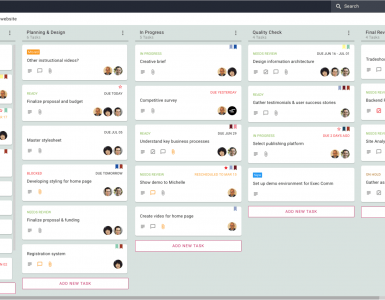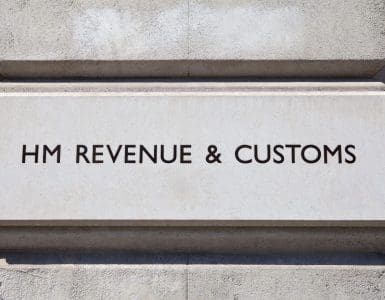So you’ve got your video ready, your campaign copy drafted and your launch date decided.
By now, you might be thinking “how do I actually publicize my crowdfunding campaign?” Well, we’ve got the answers right here: email outreach.
In this guide, we’ll tell you exactly how to maximize the impact of your crowdfunding emails. We’ll talk you through what emails to send, who to send them to and when you should send them. Let’s jump in.
Why email is essential for crowdfunding
We’re often guilty of choosing social media over email because we assume it will have an impact and we can reach more people. However, research has shown that on the whole email is more effective. The stats say it all: for every $1 you spend on email marketing, you can expect a return of $38. Plus, it’s been estimated that by 2020, an email will be used by 3 billion people, and of those that aren’t using it, 1.6 billion don’t have access to electricity. This means email is the most effective way to reach customers in the developed world.
Plus, it’s possible to personalize email, which is something you can’t do with social media. And although you might think your potential reach on Facebook or Twitter is bigger, you’ll often find that unless you’re spending on paid ads, very few people will actually see your posts. This is due to algorithms that determine what people see in their feeds. On average, only 6% of your audience will see what you post on Facebook. Compare this to an average email open rate of 22% and you can see the difference. Mailmunch breaks it down:
In other words, if you have 2,000 email subscribers, 2,000 Facebook fans and 2,000 followers on Twitter – this is what you will get:
- 435 people will open your email
- 120 Facebook fans will see your message
- 40 Twitter followers will see your message
If you neglect email in your crowdfunding campaign, you’ll be missing out. It could very well make the difference between success and failure.
Who to email: channels and tactics for crowdfunding
You can break this down into two mailing lists – your personal network and a wider mailing list. The tactics you’ll use for these two distinct groups will obviously be different.
Personal Network
Your personal network is invaluable when you’re launching a crowdfunding campaign. Friends and family are probably going to be your most willing backers, and they’ll get your campaign going with its first donations. This is really important – ideally, you want to have secured 30% of the funds within 48 hours of the campaign starting. 30% is generally considered to be a key number in crowdfunding campaigns:
If you can reach 30% of your Kickstarter total, you’re pretty likely to make it to 100%.
Why? Because that 30% is somehow representative of your personal network, and crossing that threshhold is proof that you’ve broken out. Obviously you need to have enough time to make up the remaining 70%, but breaking out is a vote of confidence that drags more people in, and pushes you towards — and hopefully over — the finish line.
Getting this email list together should be easy enough. Also, collect email addresses from other people in your startup. By combining your personal networks, you should have a pretty big list ready-made. You can also use an email ID finder to get someone’s contact details if you don’t already have them.
If possible, add personal messages to the emails you send to people on this list. After all, you already know them, so a more personal request for support will be appreciated.

Building a Mailing List
Of course, you can’t just rely on the people you already know. You’ve also got to build a strategy for marketing your campaign to total strangers. As we’ve already said, email is a far more effective method of doing this than social media. But how exactly do you build up a list big enough to have an impact?
The best way to build your email list is to offer an incentive in return for an email. For example, this could be a discount voucher or exclusive content. A popular way to do this is to create free, high-value content that can only be downloaded when an email address is entered – e.g a white paper or ebook. You can then drive traffic to its landing page through on-site calls-to-action and social media posts.
If you’ve managed to create some buzz for your crowdfunding campaign, you can also ask people to sign up for a newsletter that will give them updates on its progress.
There’s one thing you should pay attention to when building your list: make sure you gather verified email addresses. “People can make typos when trying to subscribe or may use temporary addresses. That will cause bounces and affect your entire crowdfunding campaign” says ZeroBounce CEO Liviu Tanase. “Make sure to validate your email list regularly so you can land in your subscribers’ inboxes,” the email expert adds.
When and what you should email
Email #1: 7 – 10 Days Before
Don’t wait until your campaign is live to start emailing. You need to build up some excitement beforehand with a good onboarding/welcome email. The first email should be sent about a week before your campaign launches. It should tell your potential backers everything they need to know about your project: details about what it is, the crowdfunding goal, when it’s launching, and how long it will last. Here’s an example email:
Hey [Name], [Personal message for people you know] I just wanted to let you know that my crowdfunding campaign for [project name] will be going live next week, on [date]. [project details here - what you're hoping to achieve, what their money will be spent on] I'm aiming to raise [target amount] by [deadline]. I'd really appreciate your support and I've got some great rewards in store for backers - for example, [perk details]. I hope you're interested, and can help me out as a backer. Let me know if you've got any questions. All best, [Your name]
Email #2: 48 hours before
This should be a simple reminder email. You might also want to emphasize the rewards more in this email. For instance, if certain rewards are limited, explain that early backers will have a much higher chance of getting them.
Email #3: Launch day
It’s launch day. Get excited. But more importantly, get your potential backers excited. Schedule an email for when your campaign goes live, with a link to the campaign page.
Hi [Name], The Kickstarter campaign for [project name] is now live! I would really appreciate it if you could make a pledge. We've only got [number of days] to raise [target] and if we don't, we won't get anything. You can find the campaign and more details here: [link] Thanks so much - and if you've got any questions, please let me know. All best, [Your name]
Email #4 – 48 hours before the end
This is the last chance email. However, it’s worth sending this even if you’ve already met your target. You can add stretch goals to encourage some last-minute pledges.
If possible, segment this email so only people who haven’t already backed you receive it.
Hi [Name], Our crowdfunding campaign for [Project Name] is coming to an end in just two days! We haven't quite hit our goal yet, so we would really appreciate your support. We're currently at [percentage] of our goal, so we just need a few more people to make pledges if we're going to be successful. Please consider supporting us at: [link] All best, [Your Name]
OR, if you’ve met your goal:
Hi [Name], I'm very grateful for all the donations we've got so far, and we're really happy to have already met our target! We've got just two days left, so we thought we'd make one last push for pledges! We've added a stretch goal of [amount] and if we meet it we'll add [cool feature, extra reward]. You can support us at: [link] All best, [Your Name]
Email #5: The Thank You Email
This one’s pretty self-explanatory. When you’ve finished the project, send a thank you email to your backers. You should do this even if you’re not successful, as you can always outline your future plans to make your project happen.
Want to make your crowdfunding campaign the best it can be? Find out what graphics you’ll need for your campaign page.
And if you want the full lowdown, check out our complete checklist of everything you’ll need to crowdfund your startup idea.









